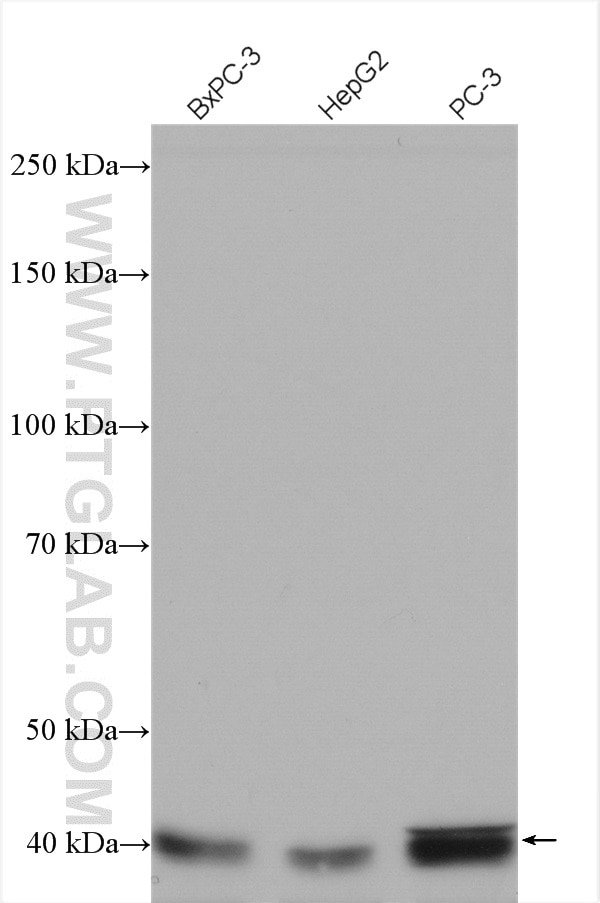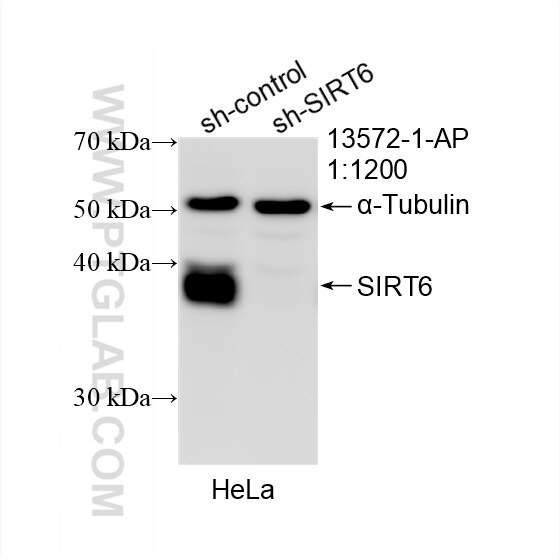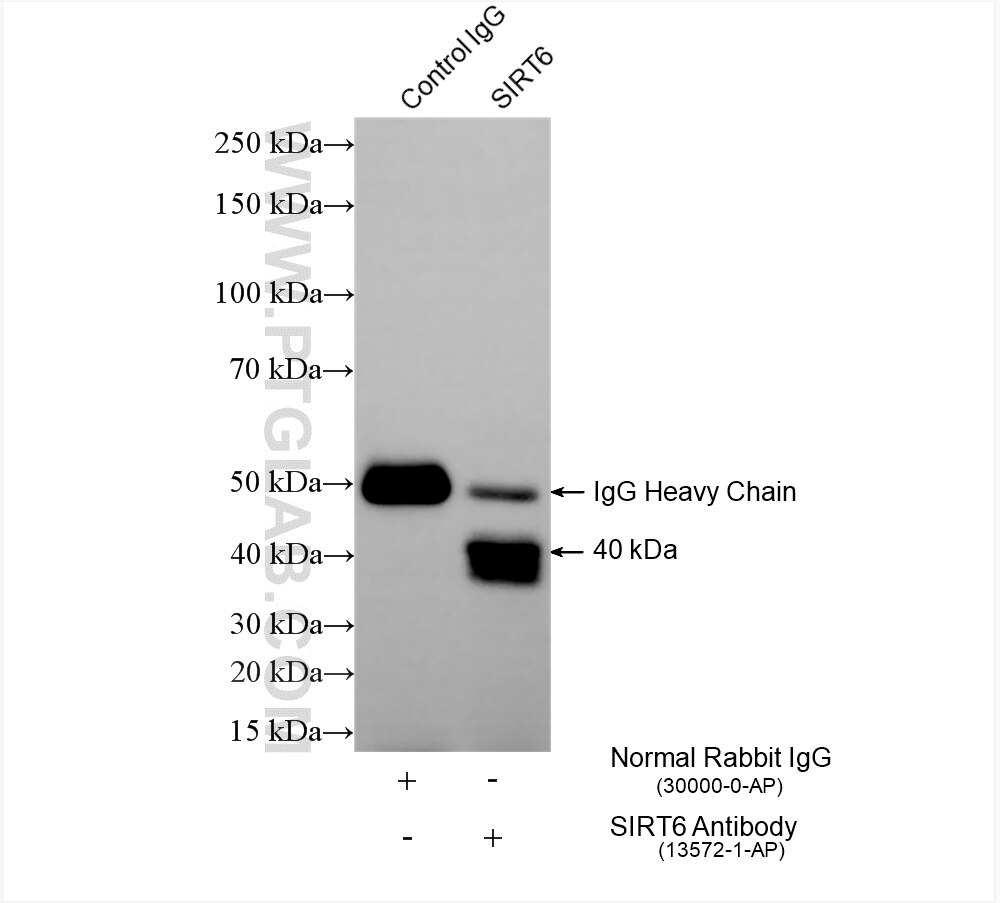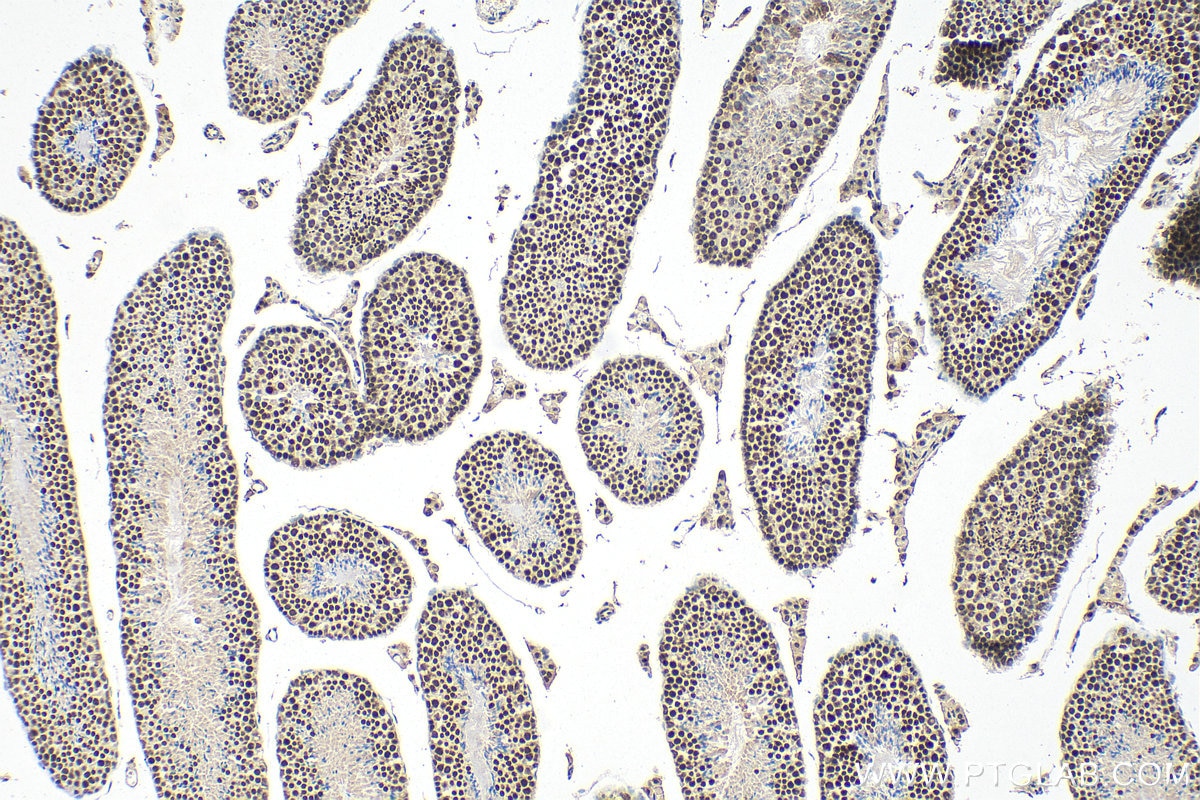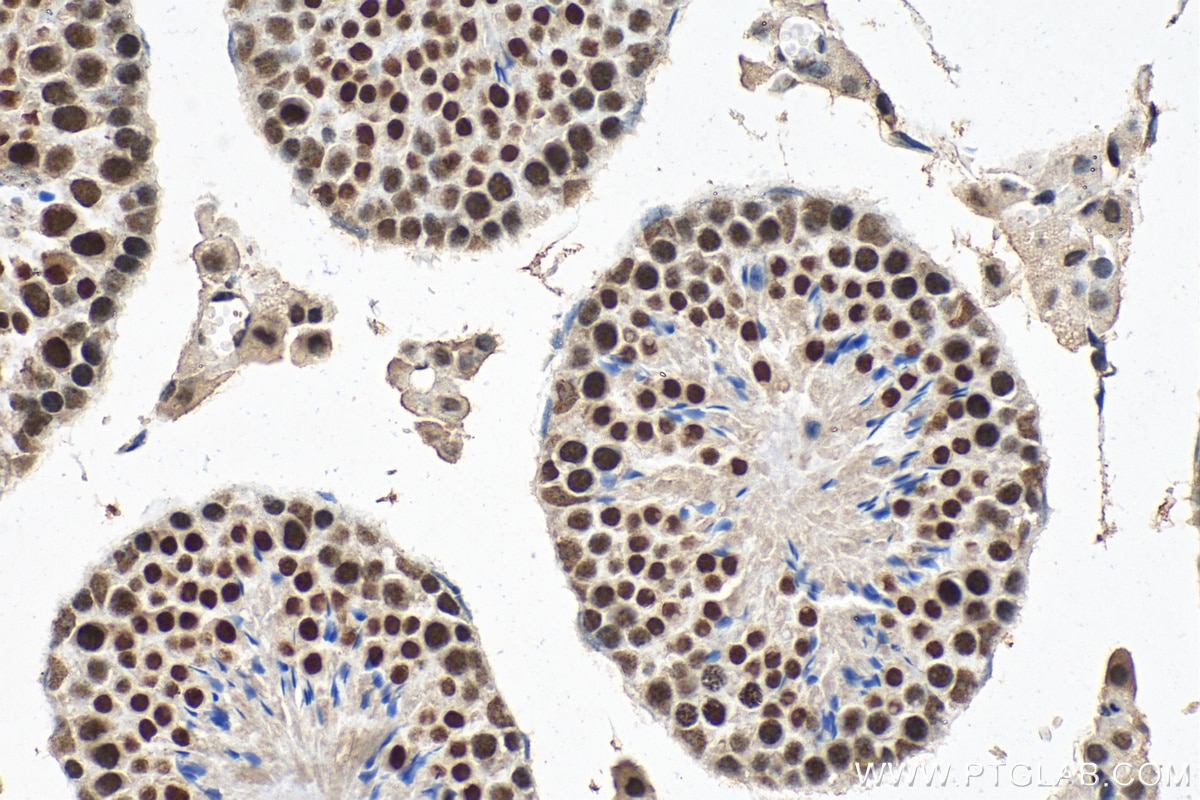Validation Data Gallery
Tested Applications
| Positive WB detected in | BxPC-3 cells, HeLa cells, HepG2 cells, PC-3 cells |
| Positive IP detected in | BxPC-3 cells |
| Positive IHC detected in | mouse testis tissue Note: suggested antigen retrieval with TE buffer pH 9.0; (*) Alternatively, antigen retrieval may be performed with citrate buffer pH 6.0 |
Recommended dilution
| Application | Dilution |
|---|---|
| Western Blot (WB) | WB : 1:500-1:3000 |
| Immunoprecipitation (IP) | IP : 0.5-4.0 ug for 1.0-3.0 mg of total protein lysate |
| Immunohistochemistry (IHC) | IHC : 1:250-1:1000 |
| It is recommended that this reagent should be titrated in each testing system to obtain optimal results. | |
| Sample-dependent, Check data in validation data gallery. | |
Product Information
13572-1-AP targets SIRT6 in WB, IHC, IF, IP, CoIP, ChIP, RIP, ELISA applications and shows reactivity with human, mouse, rat samples.
| Tested Reactivity | human, mouse, rat |
| Cited Reactivity | human, mouse, rat, bovine |
| Host / Isotype | Rabbit / IgG |
| Class | Polyclonal |
| Type | Antibody |
| Immunogen | SIRT6 fusion protein Ag4469 相同性解析による交差性が予測される生物種 |
| Full Name | sirtuin (silent mating type information regulation 2 homolog) 6 (S. cerevisiae) |
| Calculated molecular weight | 39 kDa |
| Observed molecular weight | 39-45 kDa |
| GenBank accession number | BC028220 |
| Gene Symbol | SIRT6 |
| Gene ID (NCBI) | 51548 |
| RRID | AB_2188915 |
| Conjugate | Unconjugated |
| Form | Liquid |
| Purification Method | Antigen affinity purification |
| UNIPROT ID | Q8N6T7 |
| Storage Buffer | PBS with 0.02% sodium azide and 50% glycerol , pH 7.3 |
| Storage Conditions | Store at -20°C. Stable for one year after shipment. Aliquoting is unnecessary for -20oC storage. |
Background Information
SIRT6, also named as SIR2L6, belongs to the sirtuin family. It is known to deacetylate H3K9, H3K56 and CtIP in vivo. SIRT6 regulates the expression of a large number of stress-responsive and metabolism related genes, promotes genomic stability and stimulates base excision and double strand break DNA repair(PMID: 20729089). By maintaining both the integrity and the expression of the mammalian genome, SIRT6 thus serves several roles that parallel Sir2 function(PMID: 20729089). In addtion, Sirt6-deficient animals develop normally for several weeks after birth, but succumb to an acute multi-organ degenerative syndrome that is uniformly lethal by one month of age(PMID: 19135889). This antibody is a rabbit polyclonal antibody raised against full length human SIRT6 antigen.
Protocols
| Product Specific Protocols | |
|---|---|
| WB protocol for SIRT6 antibody 13572-1-AP | Download protocol |
| IHC protocol for SIRT6 antibody 13572-1-AP | Download protocol |
| IP protocol for SIRT6 antibody 13572-1-AP | Download protocol |
| Standard Protocols | |
|---|---|
| Click here to view our Standard Protocols |
Publications
| Species | Application | Title |
|---|---|---|
Nat Commun Targeting USP47 overcomes tyrosine kinase inhibitor resistance and eradicates leukemia stem/progenitor cells in chronic myelogenous leukemia. | ||
Nat Commun Cordycepin prevents radiation ulcer by inhibiting cell senescence via NRF2 and AMPK in rodents. | ||
Redox Biol A new FGF1 variant protects against adriamycin-induced cardiotoxicity via modulating p53 activity. | ||
Cell Death Dis LINC00887 promotes GCN5-dependent H3K27cr level and CRC metastasis via recruitment of YEATS2 and enhancing ETS1 expression | ||
Oncogene Sirtuin-mediated deacetylation of hnRNP A1 suppresses glycolysis and growth in hepatocellular carcinoma. | ||
Stem Cells SIRT6 regulates osteogenic differentiation of rat bone marrow mesenchymal stem cells partially via suppressing the nuclear factor-kappa B signaling pathway.
|
